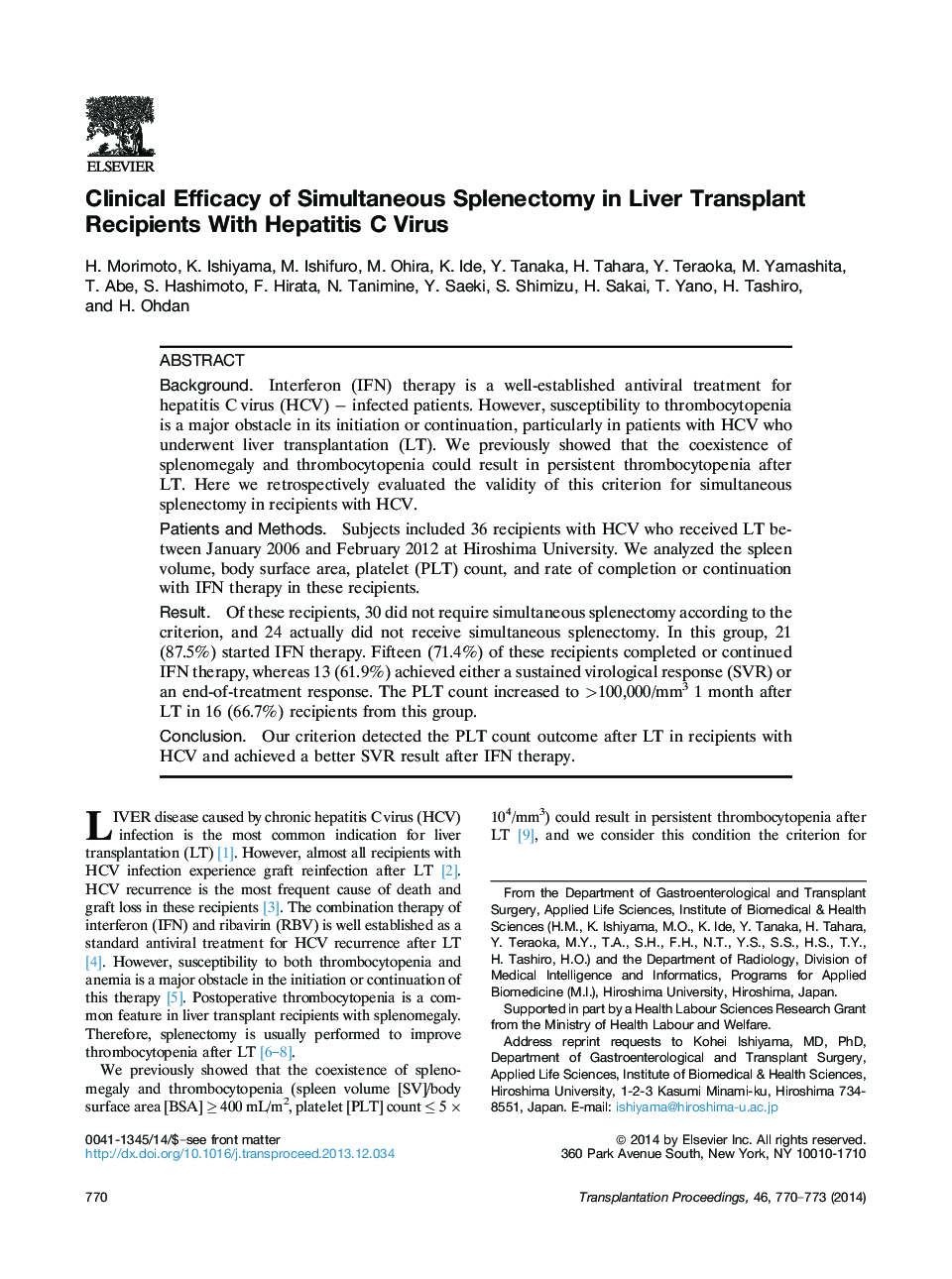| Article ID | Journal | Published Year | Pages | File Type |
|---|---|---|---|---|
| 4258391 | Transplantation Proceedings | 2014 | 4 Pages |
BackgroundInterferon (IFN) therapy is a well-established antiviral treatment for hepatitis C virus (HCV) − infected patients. However, susceptibility to thrombocytopenia is a major obstacle in its initiation or continuation, particularly in patients with HCV who underwent liver transplantation (LT). We previously showed that the coexistence of splenomegaly and thrombocytopenia could result in persistent thrombocytopenia after LT. Here we retrospectively evaluated the validity of this criterion for simultaneous splenectomy in recipients with HCV.Patients and MethodsSubjects included 36 recipients with HCV who received LT between January 2006 and February 2012 at Hiroshima University. We analyzed the spleen volume, body surface area, platelet (PLT) count, and rate of completion or continuation with IFN therapy in these recipients.ResultOf these recipients, 30 did not require simultaneous splenectomy according to the criterion, and 24 actually did not receive simultaneous splenectomy. In this group, 21 (87.5%) started IFN therapy. Fifteen (71.4%) of these recipients completed or continued IFN therapy, whereas 13 (61.9%) achieved either a sustained virological response (SVR) or an end-of-treatment response. The PLT count increased to >100,000/mm3 1 month after LT in 16 (66.7%) recipients from this group.ConclusionOur criterion detected the PLT count outcome after LT in recipients with HCV and achieved a better SVR result after IFN therapy.
